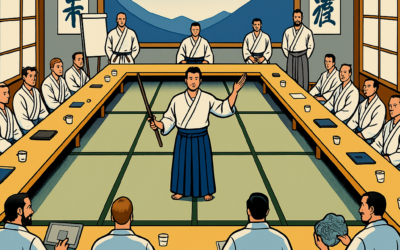Animation has given us more than great entertainment; it has given us remarkable leadership lessons. In Toy Story we are given a surprising leadership lesson by Slinky Dog. Slinky Dog is the head, feet, and tail end of a dog with the body made of Slinky. Imagine for a moment that you as the leader are the head of the Slinky Dog and that all of your followers are the tail end. Depending how you lead, your followers will be immediately behind you, right beside you, in front of you, or a long way back. A dear friend of mine who is Senior Vice President at a Global 100 company explained to me the concept behind Slinky Dog Leadership as we watched skiers come down the mountain in Steamboat Colorado. Here are the four ways it typically plays out:
Leader Too Far in Front
As a leader you can actually get too far in front of your team with your ideas and speed of desired implementation. Each day your team wakes up capable to implement the operational needs of the organization. If you were to look at each of their schedules, you would see that they may have at most 30 minutes free of time not yet soaked up in moving the business forward. In those 30 minutes, what are you asking them to do? Do you expect them to implement your idea from yesterday or two days ago as well as the amazing idea you gave them today? Your ideas might not only help them do their jobs better or more efficiently, but also significantly boost the overall performance of the organization. It’s easy for you to picture–the outcome and maybe even all the steps between this imagined future and the present–but far more difficult for your coworkers to implement. The backlog of your ideas has created a whole lot of Slinky wire between you and your coworkers, and something or someone is going to snap.
Here’s how you likely got too far in front of your coworkers:
- You overestimated or under-provided the resources (financial, equipment, or staffing) necessary to implement your new idea.
- You didn’t or aren’t willing to make tradeoffs–cutting one thing in order to free up the resources to do another.
- You didn’t get buy-in (or maybe even full understanding) from your coworkers. If they don’t comprehend what you’re suggesting or if they don’t support it, they may drag their feet in the mud, creating even more tension and Slinky wire between you and them.
Lead from the Side
You become so captivated by activities or people outside of the organization that you become estranged from your internal team. When you actually appear at the office, you are a bit of a stranger and you blow in with all the new ideas that you have gathered from the market. You have become totally disconnected with the reality of production and what it takes to get your product or service produced. You and your team are going in opposite directions. You want your team to turn in your direction, and they expect you to swing back in their direction. You may chew (or chew out) your own tail, which only serves to irritate your team, since they felt like they were not only pulling their weight, but yours while you were away. They miss their independence and may now resent your presence.
Lead like a Donut
You become so involved with your own team members that you fail to spend time with external stakeholders–in the market place or other departments (in larger organizations). You become so consumed with operations that no one can do their job consistently without youoffering a better or different way. You become so narcissistic that you are always gazing at your ass and thinking it looks good as the market passes you by.
 Leading with a Spring in Your Step
Leading with a Spring in Your Step
Creating the right amount of tension–not too little and not too much–is the art of leadership. If you take all the tension out of the system, it becomes static; if you put too much in the system, it becomes destructive. Great leaders build alignment, commitment, and accountability by regulating the tension and direction of the organization. They monitor both internal and external environments, set a clear vision and objectives, make tradeoffs, and get buy-in from team members before implementing big new ideas.
Give your team enough slack to move, but not so much that the Slinky Dog’s head and tail snap back at each other!






